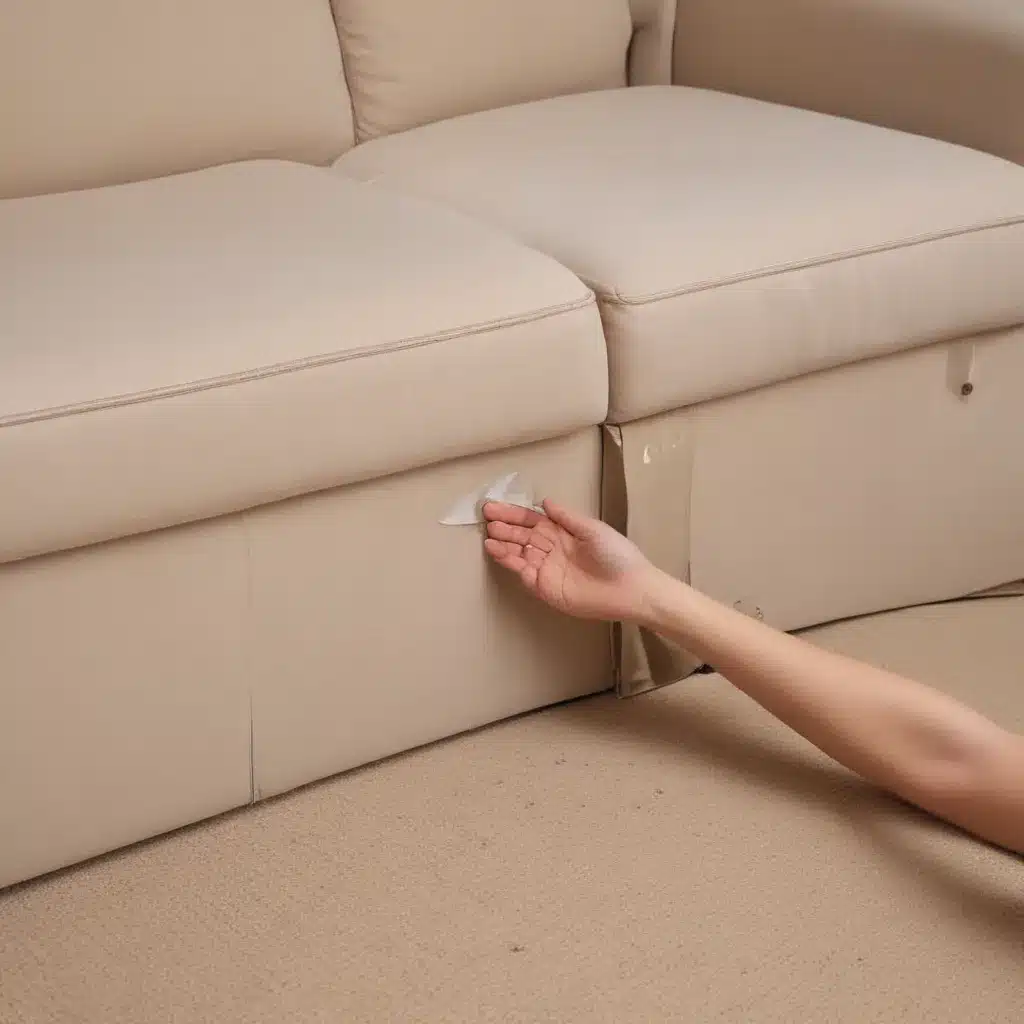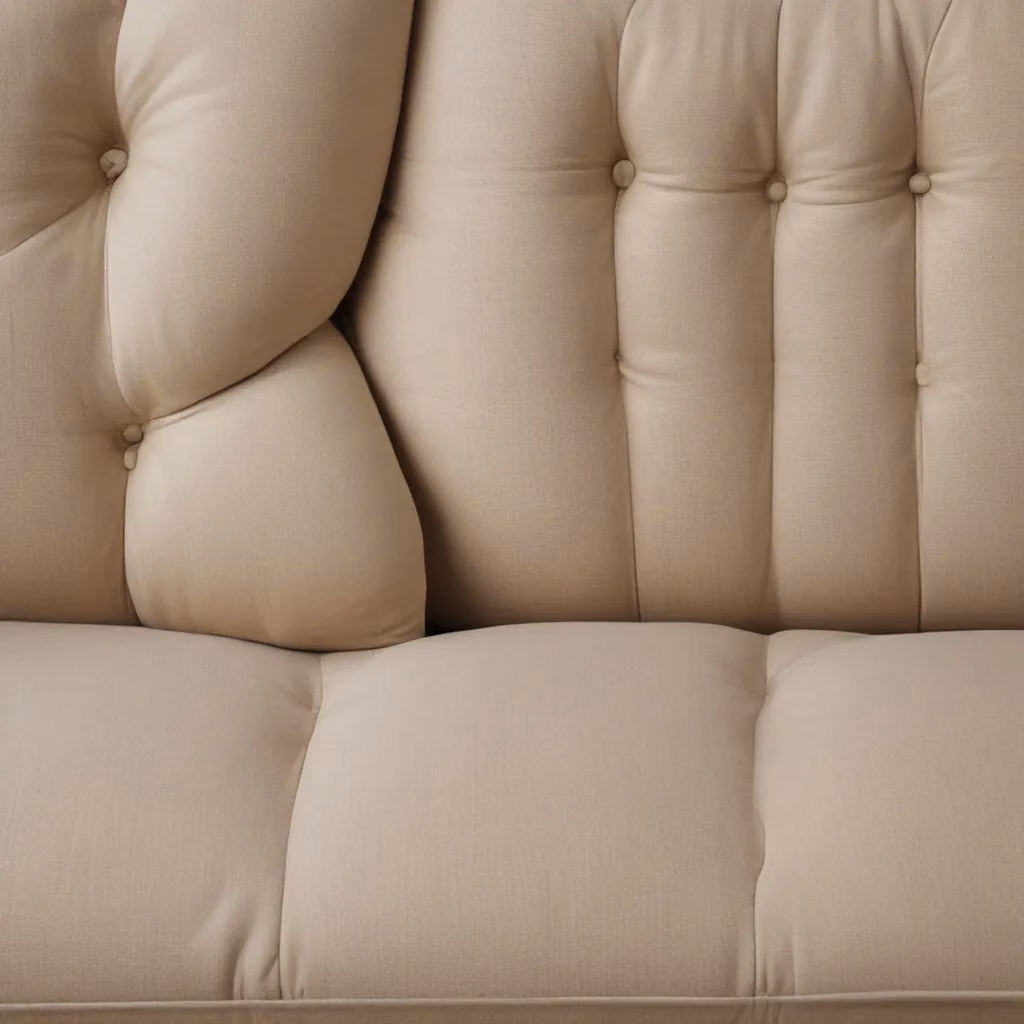Ah, the dreaded sofa squeak. You know the one – that annoying, creaky sound that seems to appear out of nowhere, like a ghostly apparition haunting your living room. Well, fear not, my friends! Today, I’m here to share my hard-earned wisdom on how to banish those pesky noises and restore the peaceful tranquility to your sofa.
Identifying the Culprit
Let’s start with the basics: figuring out where the darn noise is coming from. It could be the joints, the legs, or any other moving part of your sofa. Start by doing a thorough inspection – give your sofa a gentle shake, rock it back and forth, and listen intently for any suspicious creaks or groans.
Now, I know what you’re thinking: “But I’m not a sofa whisperer! How am I supposed to identify the source of the noise?” Fear not, my friend, for I have a foolproof method. Grab a pen and paper (or your trusty smartphone) and take notes as you methodically test each component of your sofa.
Joints
Begin by focusing on the joints. These are the areas where the various sections of your sofa are connected, and they’re often the prime suspects when it comes to annoying sounds. Gently wiggle and prod each joint, noting any areas that seem loose or unstable.
Legs
Next, turn your attention to the legs. Give them a good shake and listen for any concerning noises. Don’t forget to check the connections between the legs and the sofa frame – these can be a common culprit for squeaks and rattles.
Moving Parts
Finally, inspect any moving parts on your sofa, such as reclining mechanisms or hidden storage compartments. These areas are prone to friction and wear, which can lead to unwanted sounds.
Once you’ve identified the source of the noise, it’s time to get to work. Grab your trusty toolbox and let’s dive in!
Fixing Noisy Sofa Joints
Alright, let’s start with the joints. If you’ve detected any areas that seem loose or unstable, the solution is usually pretty straightforward: tighten them up!
Tightening Bolts and Screws
Begin by checking all the bolts and screws that hold the joints together. Use a screwdriver or wrench to tighten them down, being careful not to overtighten and risk stripping the threads.
Adding Glue
If the joints still feel a bit wobbly after tightening, it’s time to pull out the secret weapon: wood glue. Carefully disassemble the joint, clean the surfaces, and apply a generous amount of wood glue to the contact points. Reassemble the joint and let the glue dry completely before testing.
Shimmying It Up
In some cases, you might find that the joint is simply too loose, and tightening the hardware isn’t enough. Here’s a clever trick: cut a small shim from a piece of wood or plastic and wedge it into the joint. This will help stabilize the connection and reduce any unwanted movement.
Quieting Noisy Sofa Legs
Now, let’s move on to those pesky sofa legs. If you’ve discovered that the legs are the source of the noise, there are a few different approaches you can take.
Tightening Leg Connections
Just like with the joints, start by checking and tightening any bolts or screws that hold the legs in place. Make sure to go slowly and avoid overtightening, as you don’t want to risk damaging the sofa frame.
Adding Felt Pads
If the legs are rubbing against the floor, causing the noise, a simple solution is to add felt pads to the bottom of each leg. These inexpensive little guys will create a smooth, friction-free surface and help silence those annoying squeaks.
Replacing Worn Legs
In some cases, the legs themselves may be the problem. If they’re worn, cracked, or just plain old, it might be time to replace them. Consult your sofa manufacturer or a local furniture repair shop for recommendations on suitable replacement legs.
Quieting Moving Parts
Finally, let’s address any noisy moving parts on your sofa. This could include reclining mechanisms, hidden storage compartments, or even adjustable headrests.
Lubricating the Moving Parts
The key here is to reduce friction. Start by thoroughly cleaning the moving parts, removing any dust or debris. Then, apply a small amount of lubricant, such as silicone spray or a thin, lightweight oil. Be sure to follow the manufacturer’s recommendations to avoid any damage.
Tightening Connections
Just like with the joints and legs, make sure to check and tighten any bolts or screws that hold the moving parts in place. This will help minimize any unwanted movement and the resulting noise.
Replacing Worn Components
Unfortunately, sometimes the moving parts on a sofa simply wear out over time. If you’ve tried everything else and the noise persists, it might be time to consider replacing the problematic components. Reach out to your sofa manufacturer or a reputable furniture repair service for guidance on the best course of action.
Now, I know what you’re thinking: “But that all sounds like a lot of work!” And you’re right, fixing a noisy sofa can be a bit of a project. But trust me, the end result is well worth it. Imagine sinking into your freshly-quieted sofa, with nary a squeak or groan to be heard. Bliss, my friends, pure bliss.
So, what are you waiting for? Grab your tools, put on your problem-solving hat, and get to work. Your living room will thank you (and so will your sanity).




